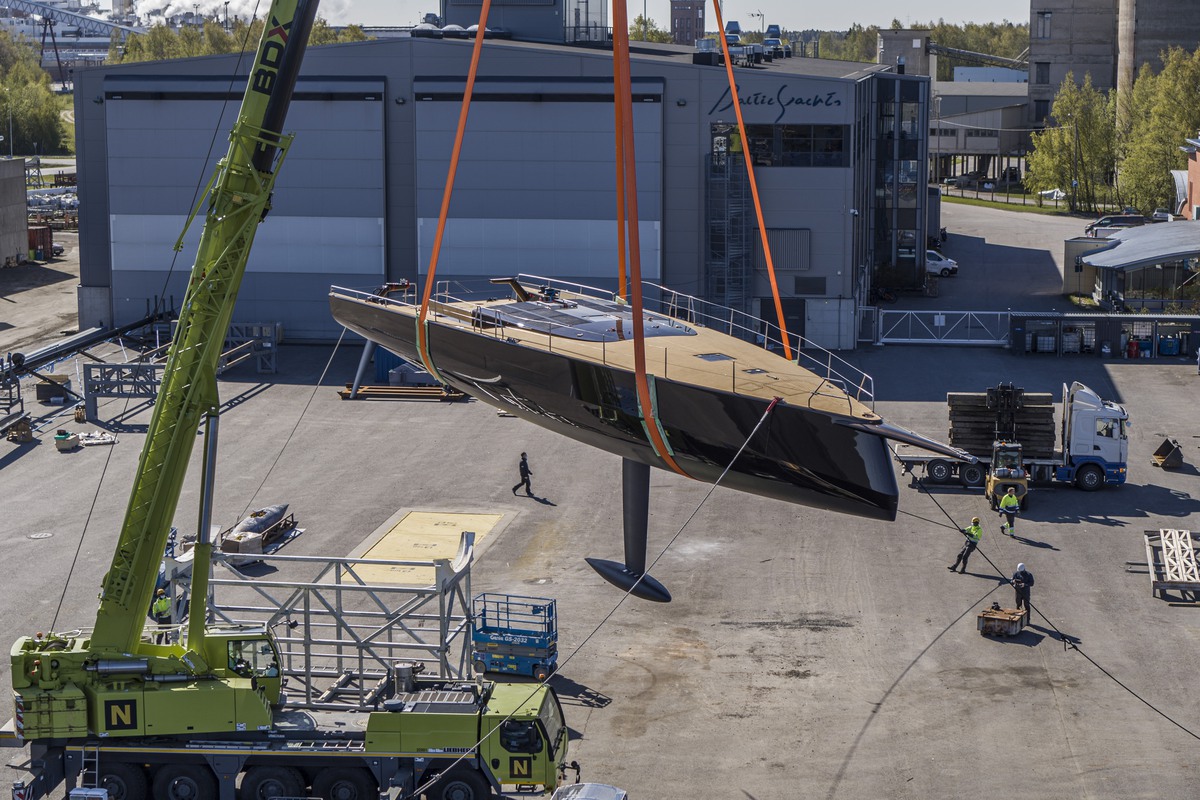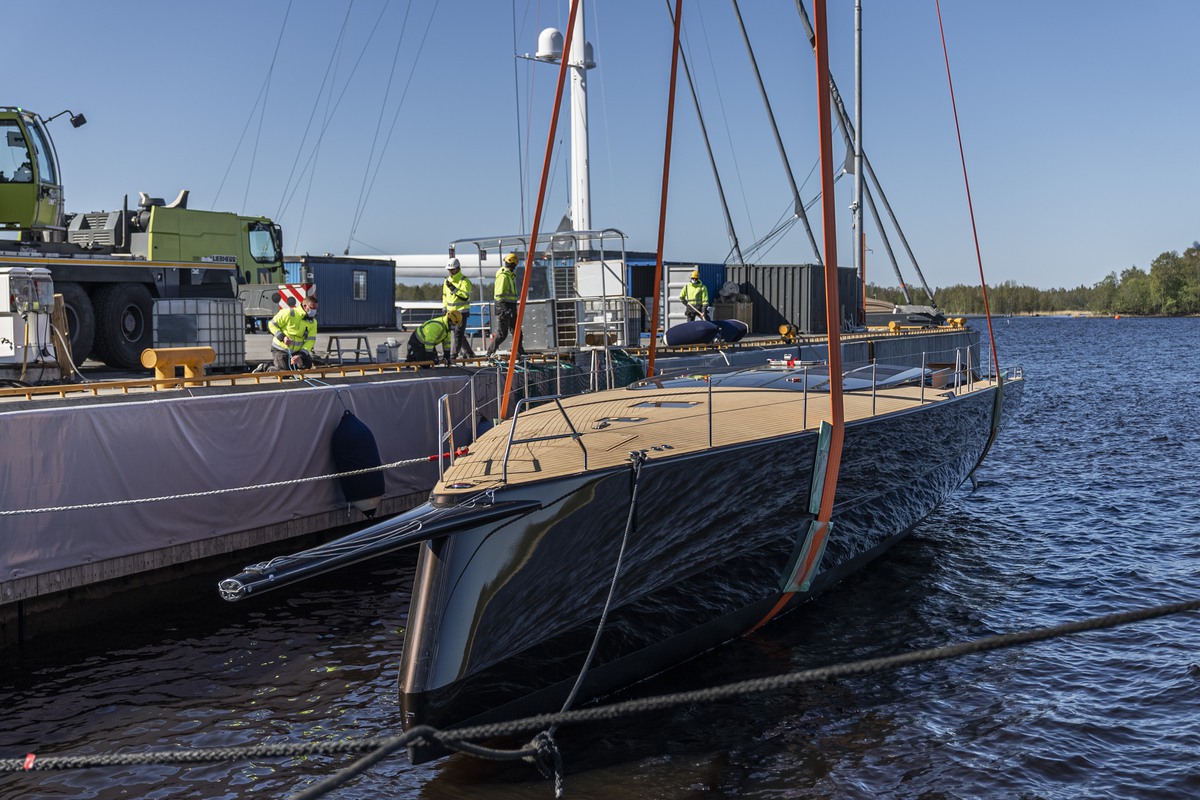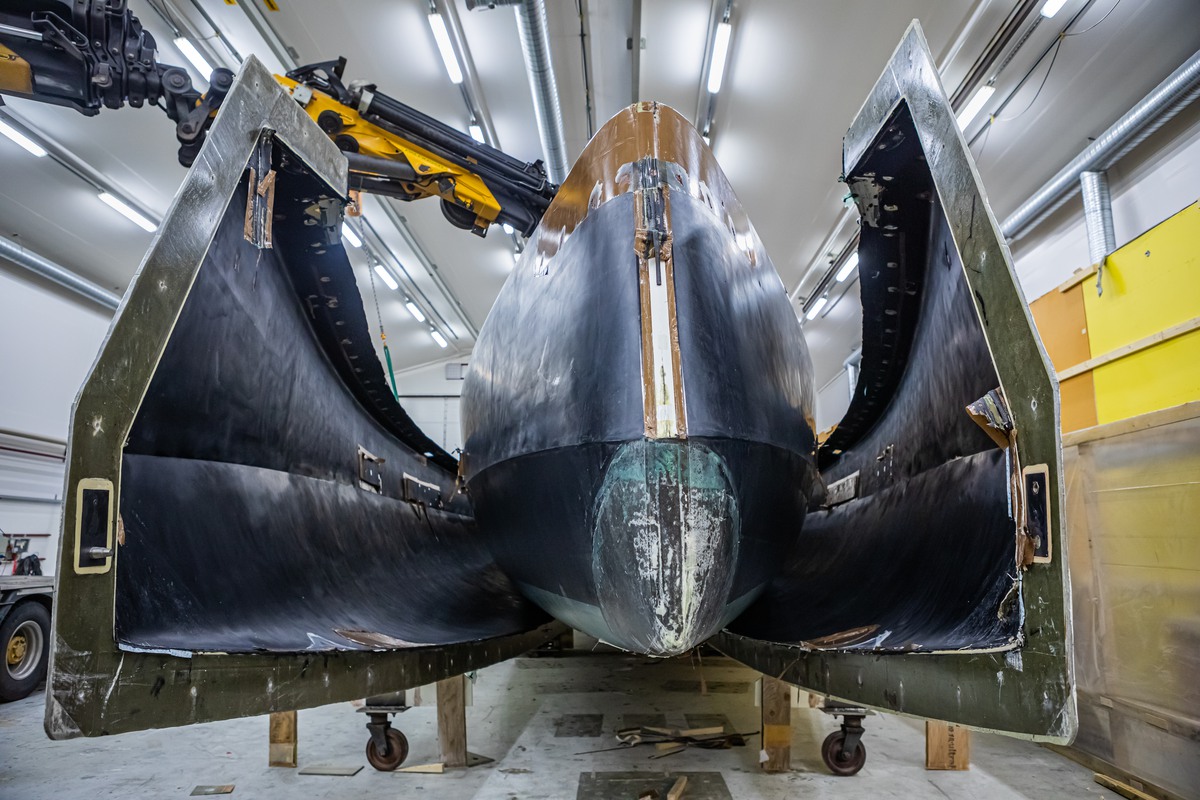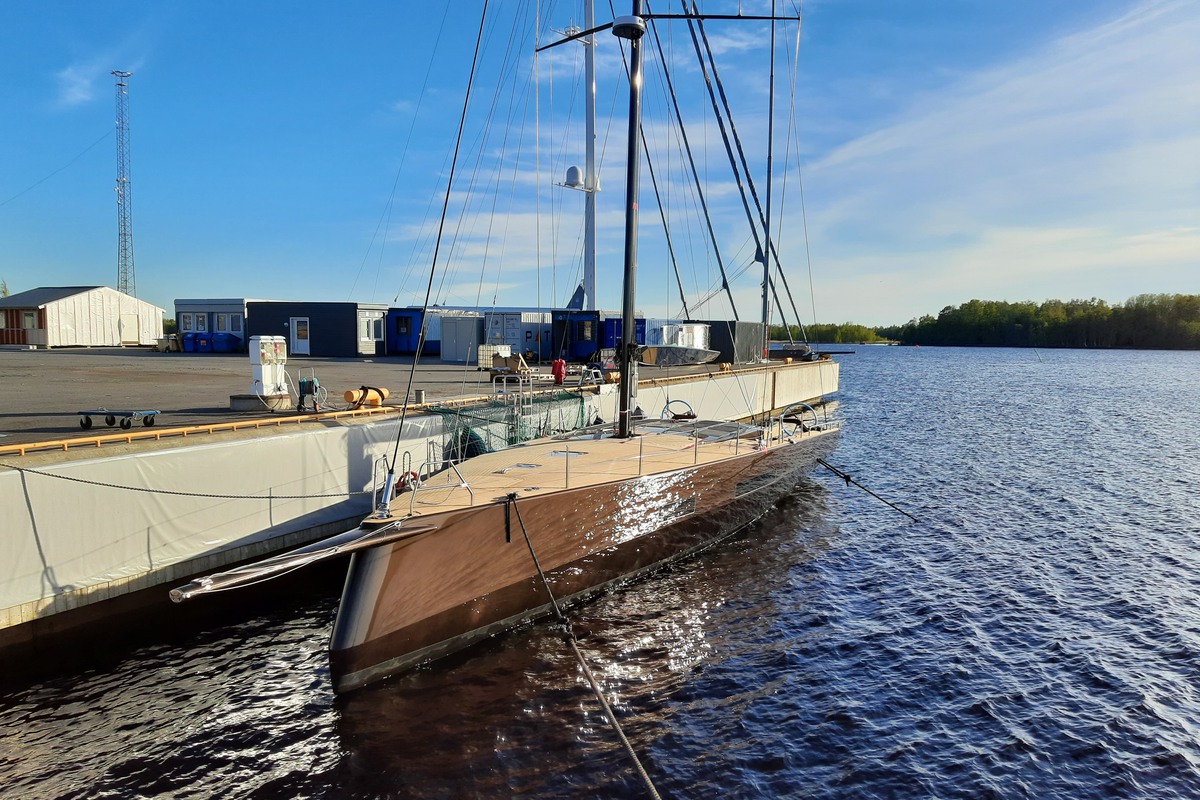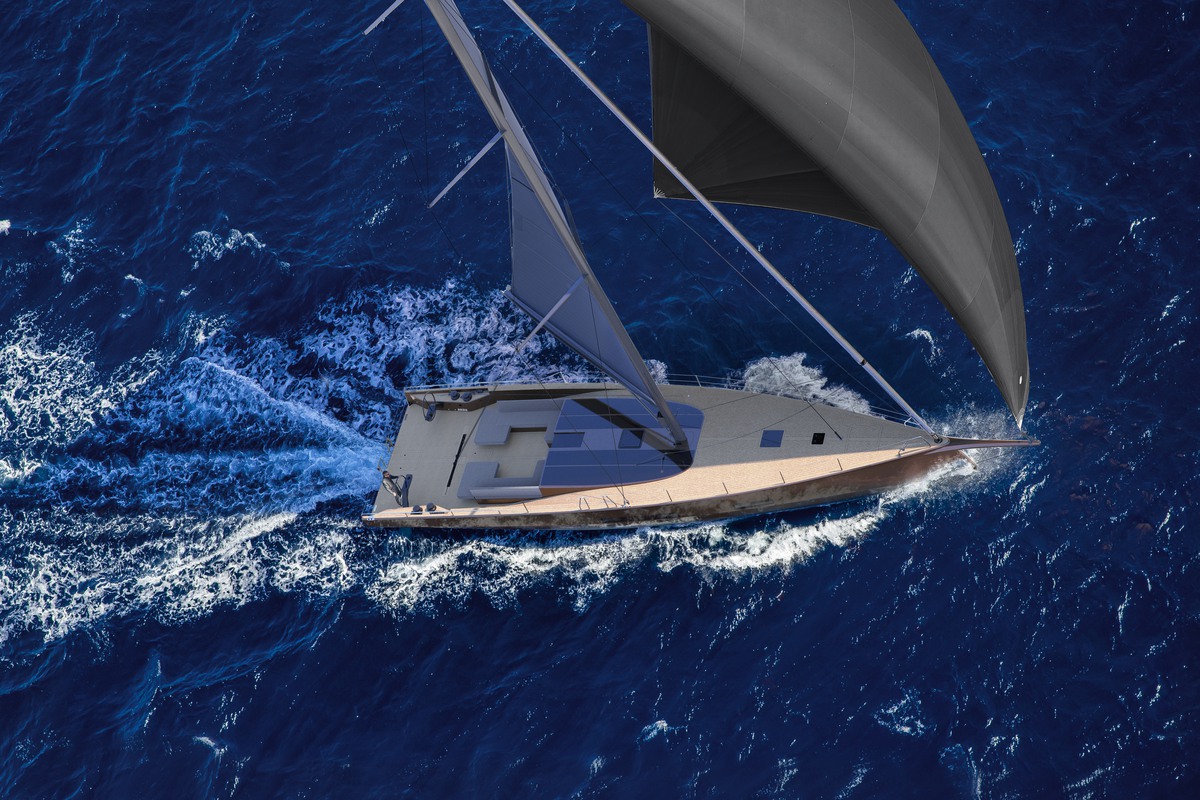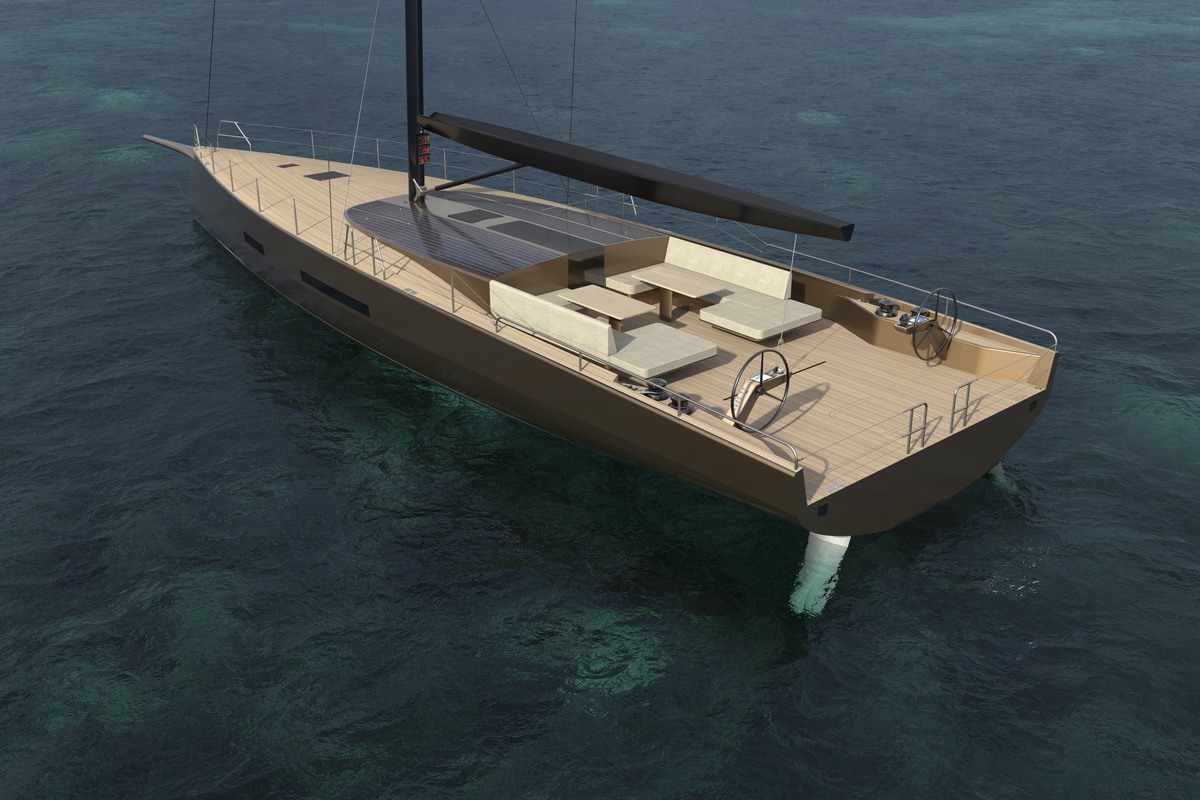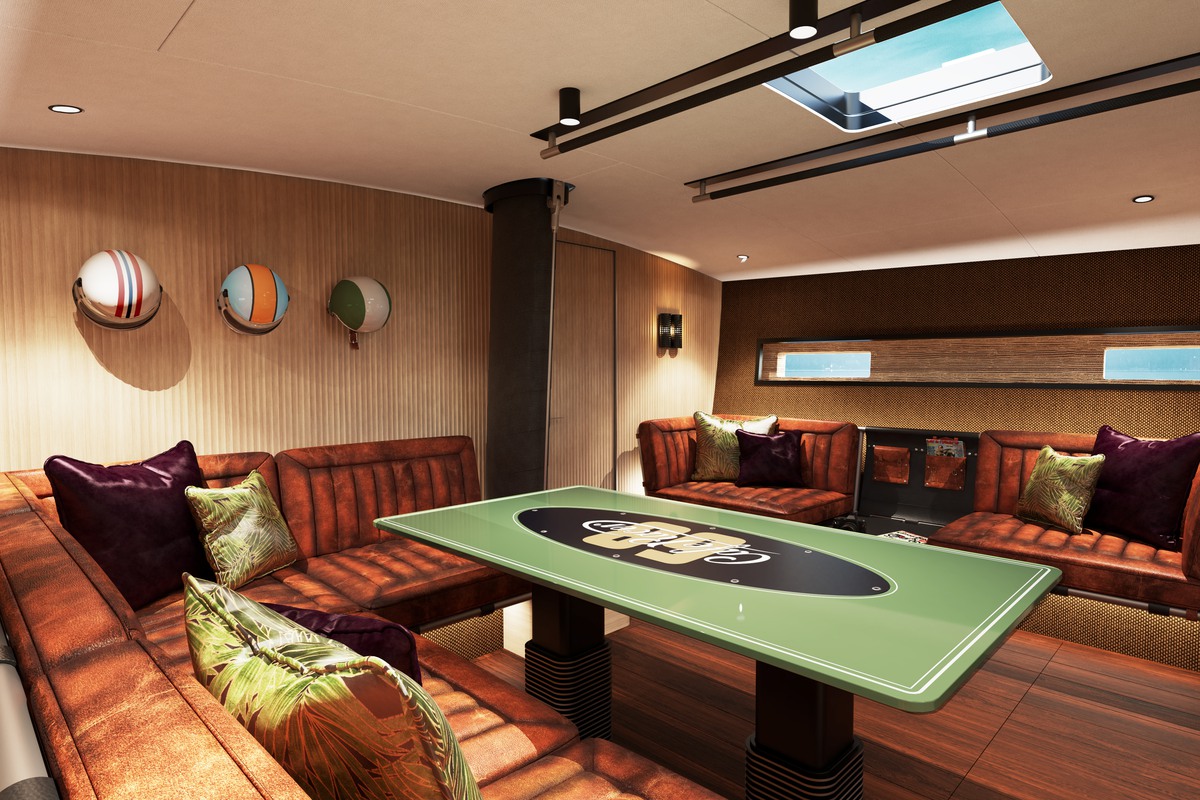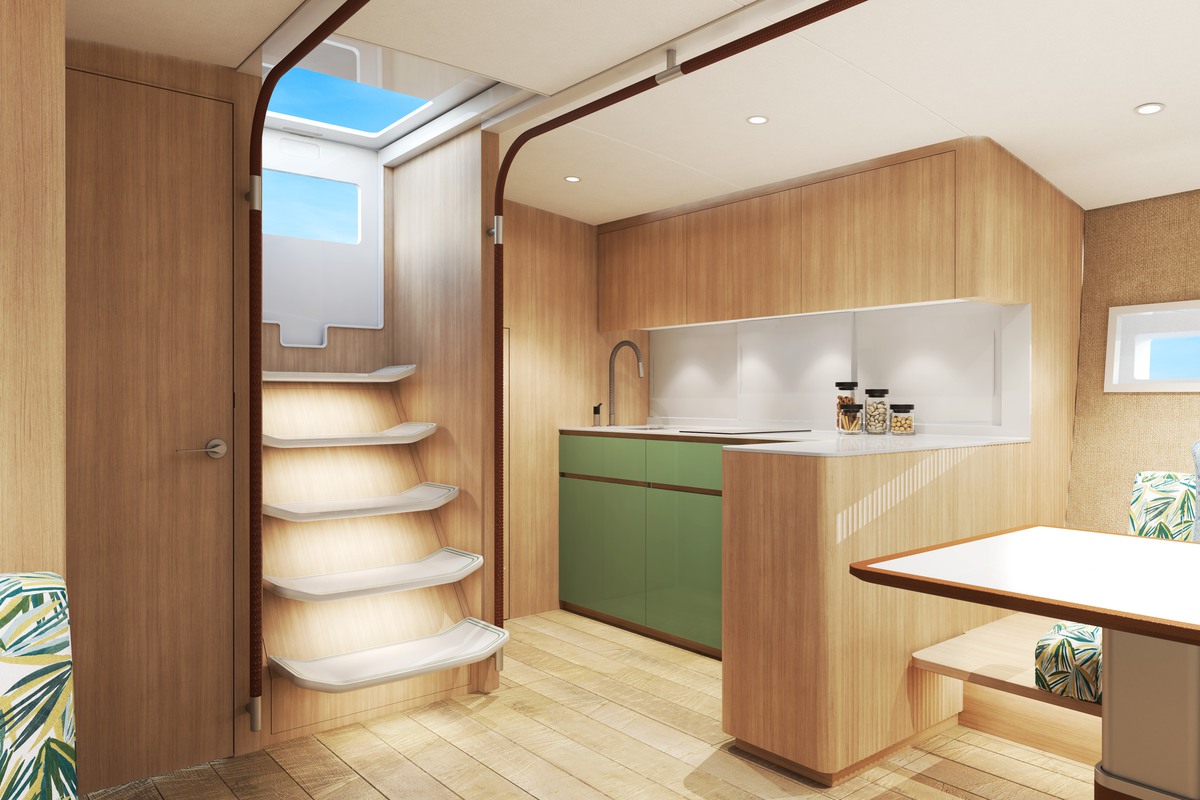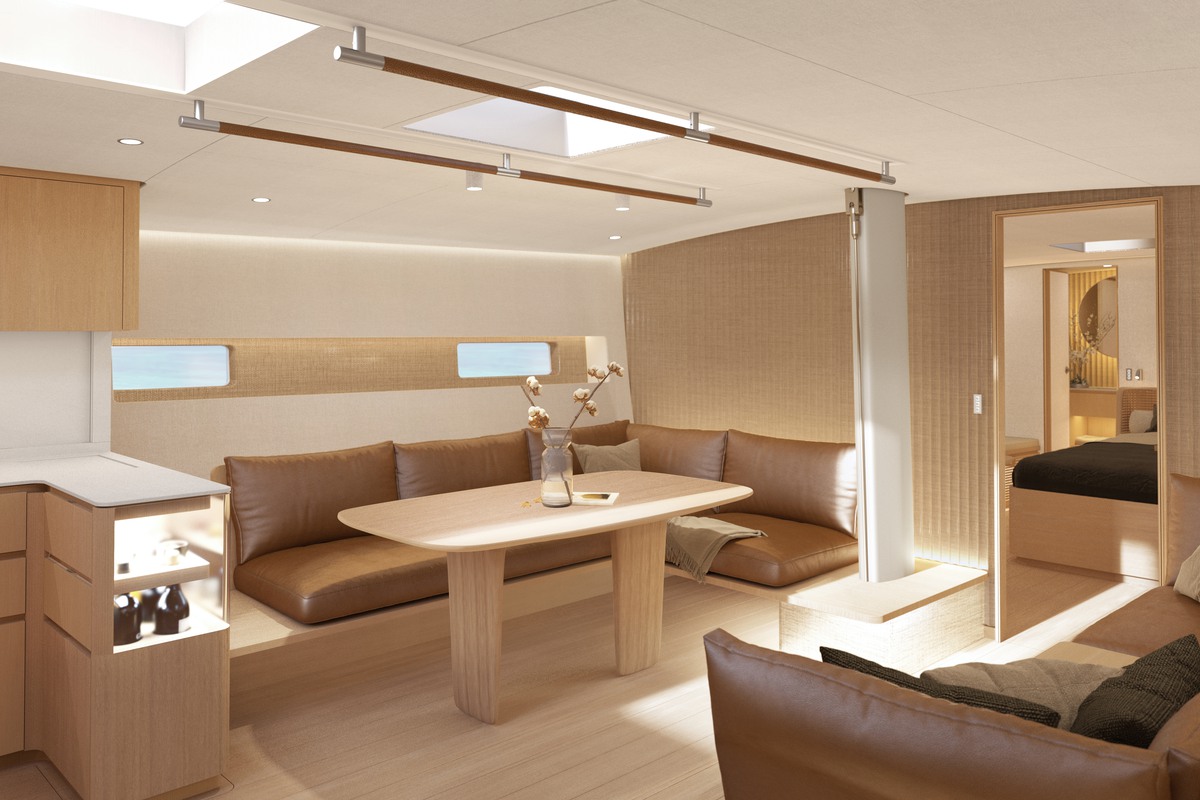Café society
Baltic Yachts has launched the first Baltic 68 Café Racer, revealing the model’s alignment with both function and environmental-consciousness.
07 June 2021
Advertisement
Baltic Yachts has officially launched its Baltic 68 Café Racer, unveiling the model’s super-stylish aesthetic, ease of use and low-carbon-footprint, balancing on the line between consistent performance and an environmentally-sustainable functionality.
One direction of this eco-friendly design is witnessed is in the use of flax, used in 50 percent of the Café Racer’s hull and deck mouldings using Bcomp’s ampliTexT naturally grown flax as a reinforcement with a SPRINT pre-preg lamination technique.
In this instance, the benefit of flax is how it reduces the Café Racer’s overall carbon footprint during construction while also being a material that works with the conventionally advanced composites used throughout the structure.
But the Cafe Racer’s green nature moves beyond its initial development, seen in the extensive array of solar panels fitted into the superstructure, providing sufficient power to run onboard systems.
Advertisement
Adding to this is the twin 15kW Oceanvolt electric motors with saildrive-style legs and the lithium battery banks – the latter adding to the charging capability.
The final cherry on top however is the presence of a micro-turbine range extender that’s compatible with either biofuels or hydrogen – ultimately revealing no need for an internal combustion engine.
“This is a yacht which tackles today’s challenges of sustainability and low carbon targets head on – she’s fun and easy to handle, offering a genuinely rewarding sailing experience,” said Baltic Yachts Executive Vice President Henry Hawkins.
“Baltic’s engineers and partners have incorporated a brilliant, naturally grown yacht building material in sustainable flax, which perfectly complements the advanced composites expertise for which the company is renowned.
“We’re confident the Baltic 68 Café Racer Class offers a modern, attractive package which clients will be keen to buy into,” he said. “We are also exploring the possibility of a ‘green’ rating advantage to encourage the use of sustainable materials in yacht building.”
As Hawkins references, the Baltic 68 Café Racer’s pursuit of functionality isn’t limited to carbon emissions. The Marstrom Composite mast, for example, relies on swept-back spreaders and a broad shroud base, removing the need for runners or backstays.
The rig also reflects this prioritisation of usability, primarily due to the use of Doyle’s Structured Luff Technology. Drawing on existing technology based on the Bergstrom/Ridder design from the 1980s, the spreader sweep of the Baltic 68 Café Racer provides mast’s aft support that would typically be provided from the backstays.
The use of modern materials in the Doyle Sails’ Structured Luff technology, alongside the aerodynamic Carbo-Link carbon standing rigging and the stiffness provided by the advanced composites combine, ensure the sails are reinforced without reducing performance capability.
“For the Café Racer without any backstays, the real benefit from structured luff technology is the fact that we don’t have to pull on the headstay as hard in order to achieve the same amount of headstay sag,” said Doyle Sails’ Global Superyacht Sales Manager, Scott Zebny.
“All of our modelling together with Marstrom’s shows that we can achieve acceptable amounts of headstay sag with the way the mast has been engineered making tacking really very easy for day sailing.”
Doyle’s Structured Luff Technology equally provides a load-bearing ability in the mainsail while reducing its overall weight, enabling for a simpler trimming experience.
“This is a yacht for owners and their friends who want their sailing exciting, easy and enjoyable. When the mood takes them, the Café Racer is ready to GO! This is the essential modern weekender with a genuinely ‘green’ approach to construction and auxiliary power,” says Baltic 68 Café Racer’s naval architect Javier Jaudenes.
“It’s a contemporary interior embracing the eco-spirit of the Café Racer,” Jaudenes later adds, explaining the choice of flax, linen and leather throughout the interiors. “One of the main ideas behind the interior is to show as much as possible the shape of the hull and intensify that unique feeling of being inside a boat.”
In this interest of performance and weight reduction, both ends of the structure are virtually empty, with the main saloon forming the focal point of the accommodation. A large owner’s double cabin is located just forward with an additional double berth starboard.
Following trials in Finland, the first Café Racer will head for the Mediterranean, where it will be exhibited at events in Sardinia and the Cote d’Azur.
Details of exhibitions at the Cannes Yachting Festival and the Monaco Yacht Show have been confirmed to be released following the easing of COVID-19 restrictions.
Advertisement
Advertisement
Advertisement


